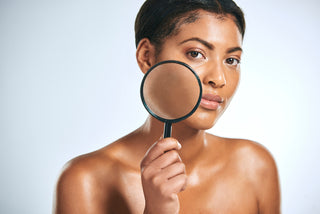As we age, our skin undergoes a natural process of wear and tear. But what exactly happens to our skin as we get older? To answer this question, we need to take a closer look at the layers of the skin and how they contribute to the ageing process.
The Epidermis
The outermost layer of the skin, the epidermis, is constantly renewing itself by shedding dead skin cells and replacing them with new ones. However, as we age, the turnover rate of skin cells slows down, leading to a buildup of dead skin cells and a dull, uneven skin tone. In addition, the number of melanocytes in the epidermis decreases, leading to age spots and uneven pigmentation.
The Dermis
The dermis is the middle layer of the skin and is responsible for providing support and elasticity to the skin. Collagen, a protein that provides strength and structure to the skin, is found in the dermis. However, as we age, the production of collagen decreases, leading to wrinkles, sagging skin, and loss of elasticity. Elastin, another protein that gives skin its elasticity, also breaks down over time, contributing to the formation of wrinkles and fine lines.
The dermis also contains blood vessels and lymphatic vessels that supply the skin with nutrients and remove waste products. As we age, these vessels become less efficient, leading to reduced blood flow and oxygen supply to the skin. This can result in a dull, lifeless complexion and slower healing of wounds and skin injuries.
The Hypodermis
The hypodermis, or subcutaneous tissue, is the deepest layer of the skin and is responsible for providing insulation and padding to the body. Changes in the distribution and thickness of subcutaneous fat can lead to visible changes in skin texture and contour as we age.
In addition to these changes, other factors such as exposure to UV radiation, pollution, smoking, and stress can accelerate the ageing process and cause further damage to the skin.
So what can we do to slow down the ageing process and maintain healthy, youthful-looking skin? By understanding the structure and function of the skin, we can take steps to protect and nourish it. This includes using sunscreen to protect against UV radiation, eating a balanced diet rich in antioxidants and nutrients, staying hydrated, and avoiding smoking and excessive alcohol consumption.
In addition, using skincare products that contain ingredients like retinol, vitamin C, and hyaluronic acid can help to stimulate collagen production, brighten the skin, and improve its overall appearance.
Remember, the key to healthy, youthful-looking skin is taking care of it from the inside out. By incorporating healthy habits and a consistent skincare routine into our daily lives, we can help our skin age gracefully and maintain its natural beauty.




